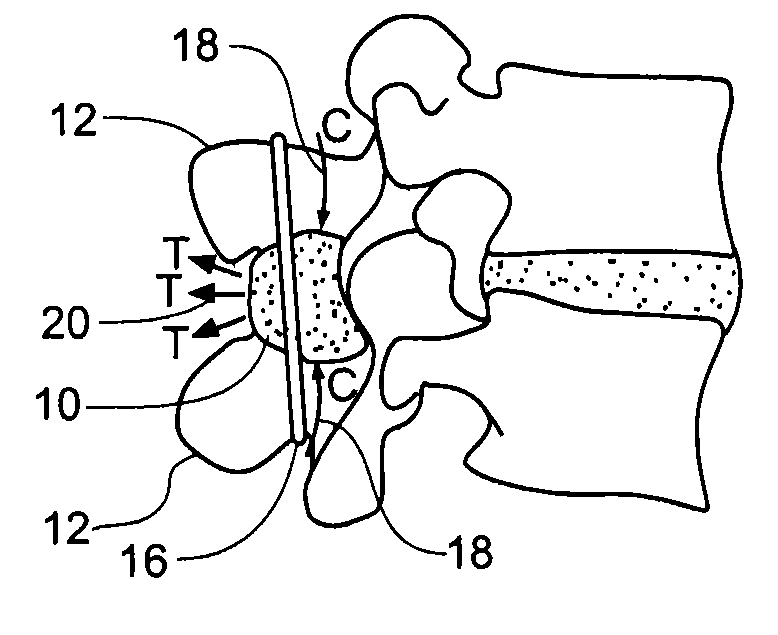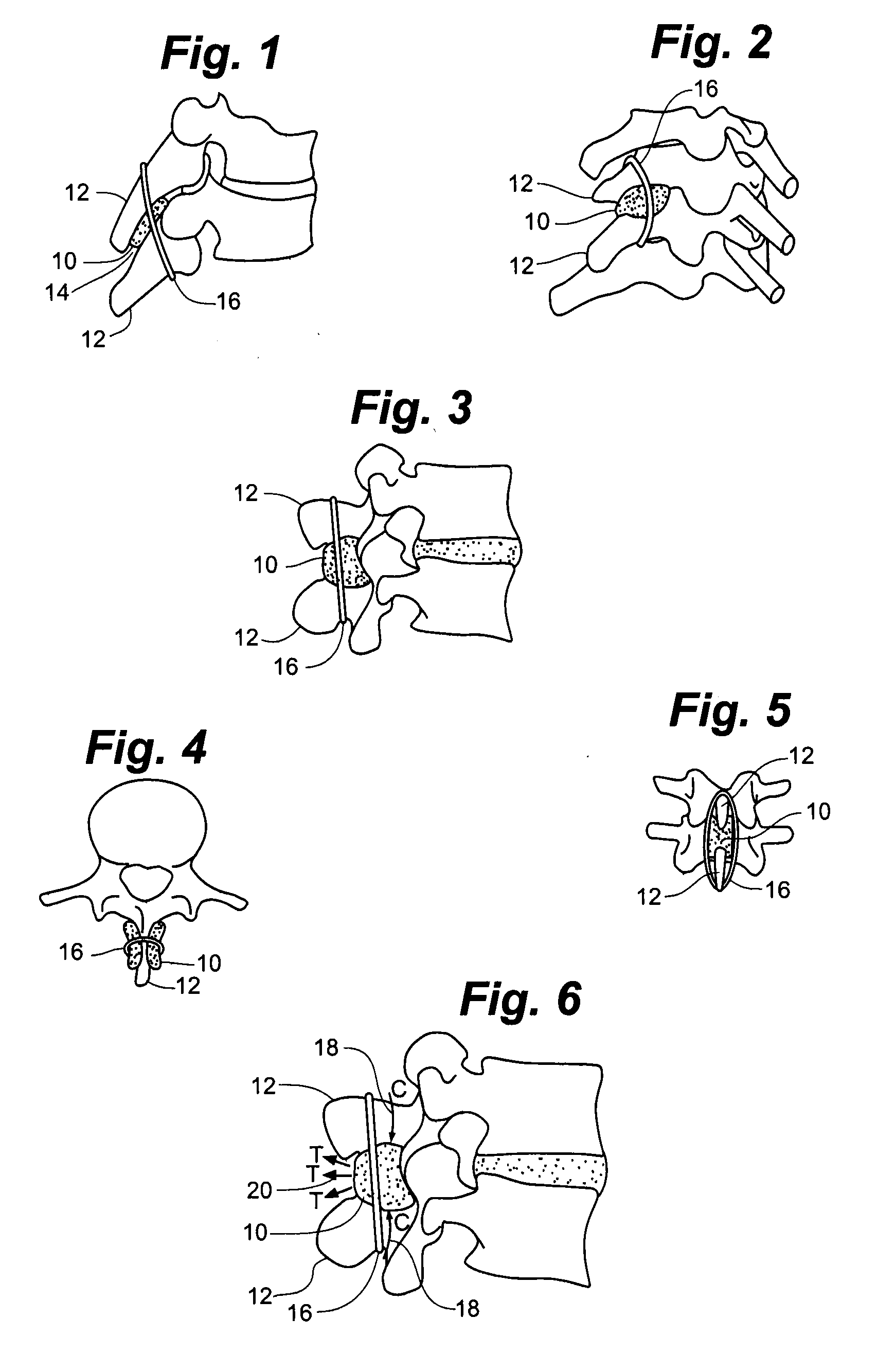Method and device for interspinous process fusion
a technology of interspinous process and fusion device, which is applied in the field of methods and devices for fusion joints, can solve the problems of mechanical failure, dislocation or dislocation from the treatment site, and varies the degree of distraction, so as to and increase the foraminal volume
- Summary
- Abstract
- Description
- Claims
- Application Information
AI Technical Summary
Benefits of technology
Problems solved by technology
Method used
Image
Examples
Embodiment Construction
[0020]According to one embodiment of the invention as depicted in FIG. 1-5, device 10 may be a flexible container such that device 10 may conform to the anatomy of the treatment site. In an embodiment, device 10 may be an elliptical shape, an “H” shape or any other shape to conform to the desired anatomy. Device 10 may be used to treat damaged, diseased or otherwise abnormal joints including, but not limited to, interspinous processes, wrists and ankles. According to one aspect, device 10 may be comprised of material including, but not limited to polyurethane, nylon, polypropylene, nitonol, thread or woven material, any suitable plastic, any suitable polymer or any other suitable material or combination thereof.
[0021]By way of example, device 10 will be described with respect to treating the interspinous space 12. One of skill in the art will readily recognize that device 10 is not limited to treating an interspinous space, but may be used to treat other joints as well. In a preferr...
PUM
 Login to View More
Login to View More Abstract
Description
Claims
Application Information
 Login to View More
Login to View More - R&D
- Intellectual Property
- Life Sciences
- Materials
- Tech Scout
- Unparalleled Data Quality
- Higher Quality Content
- 60% Fewer Hallucinations
Browse by: Latest US Patents, China's latest patents, Technical Efficacy Thesaurus, Application Domain, Technology Topic, Popular Technical Reports.
© 2025 PatSnap. All rights reserved.Legal|Privacy policy|Modern Slavery Act Transparency Statement|Sitemap|About US| Contact US: help@patsnap.com


